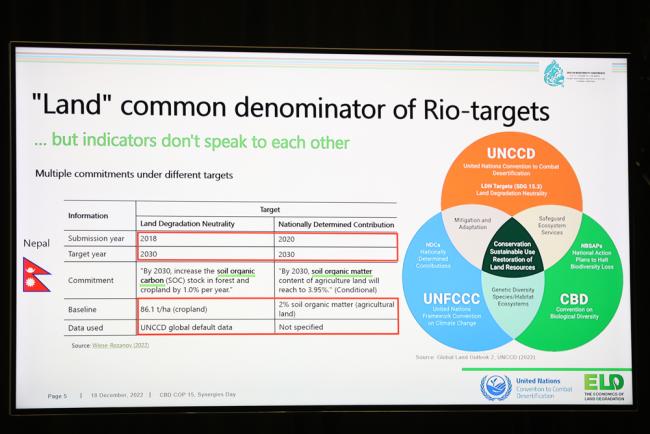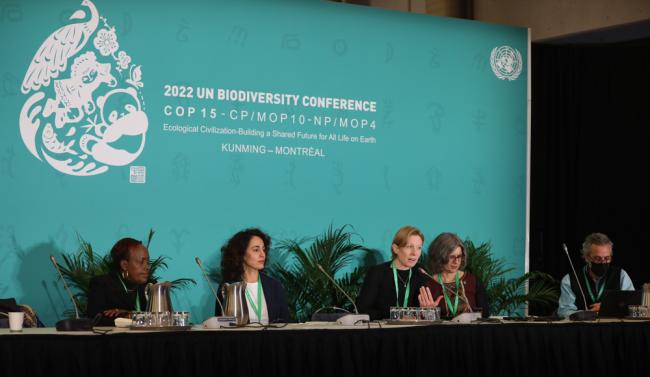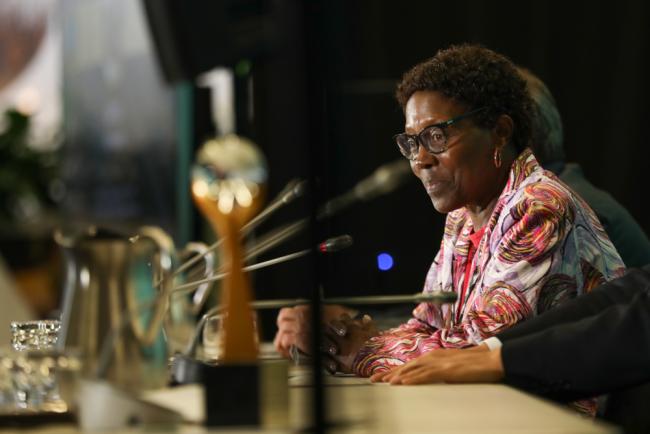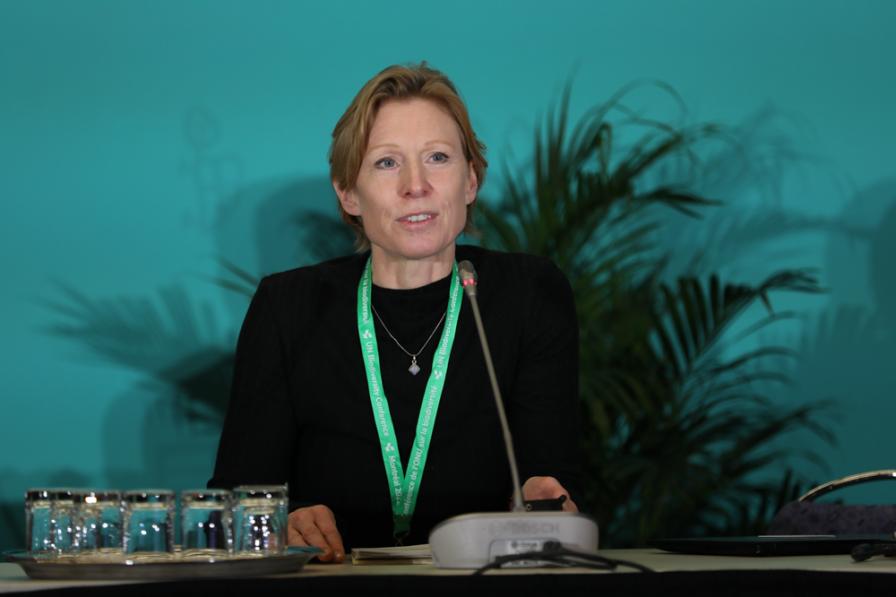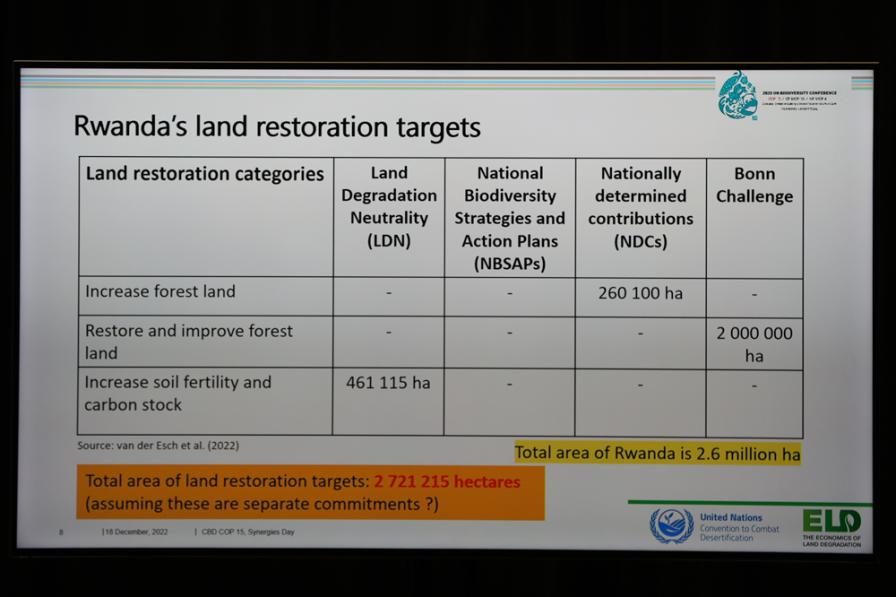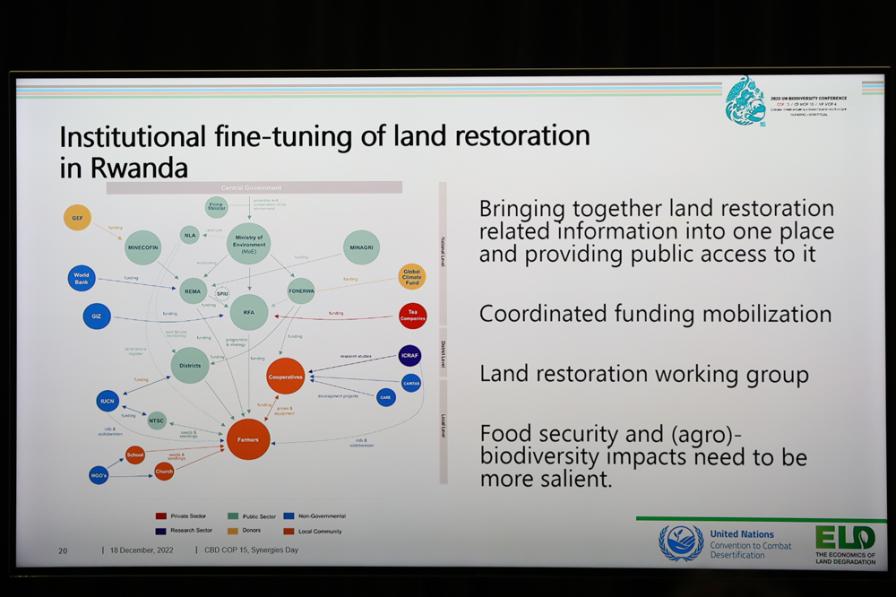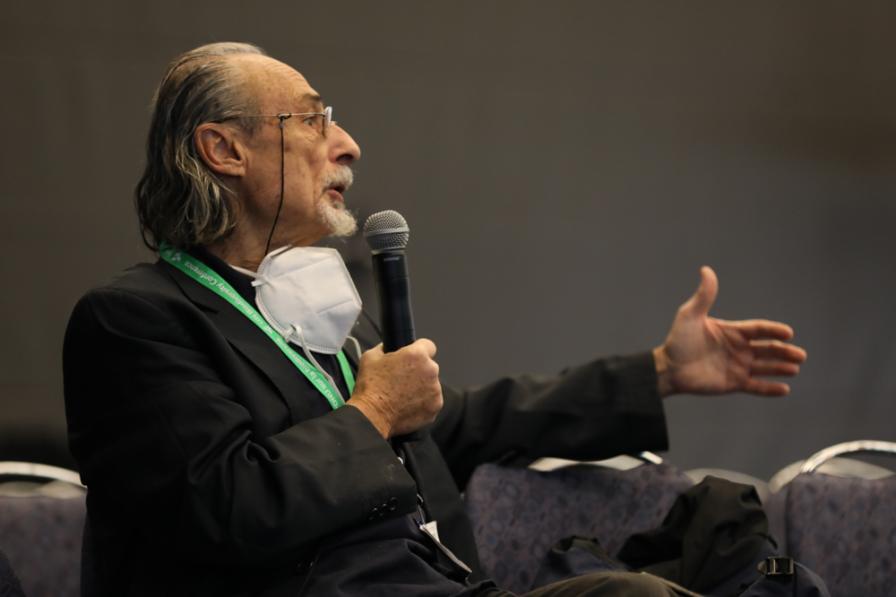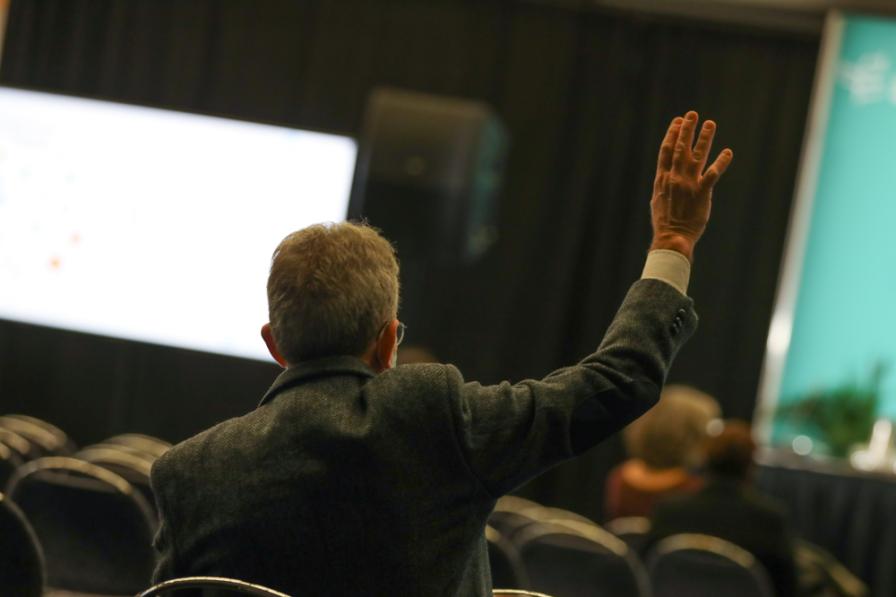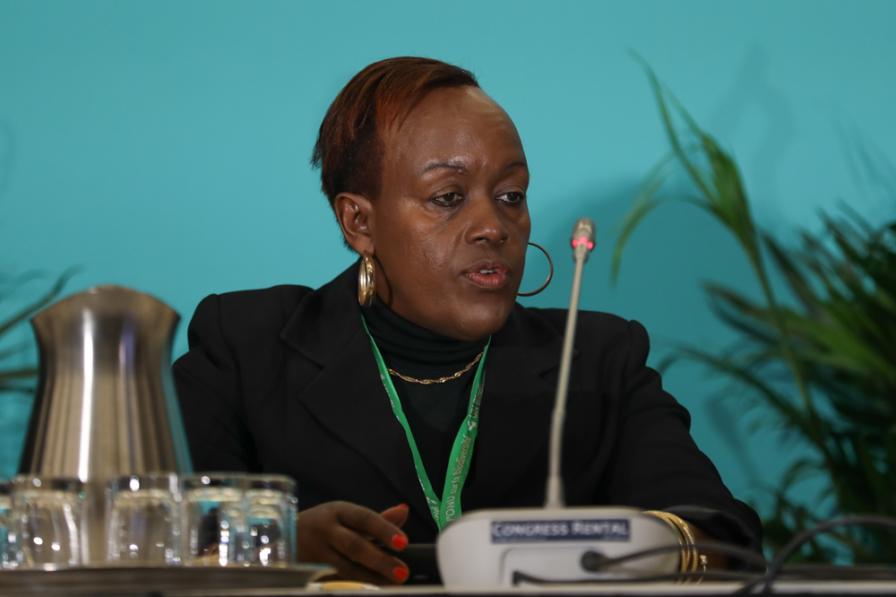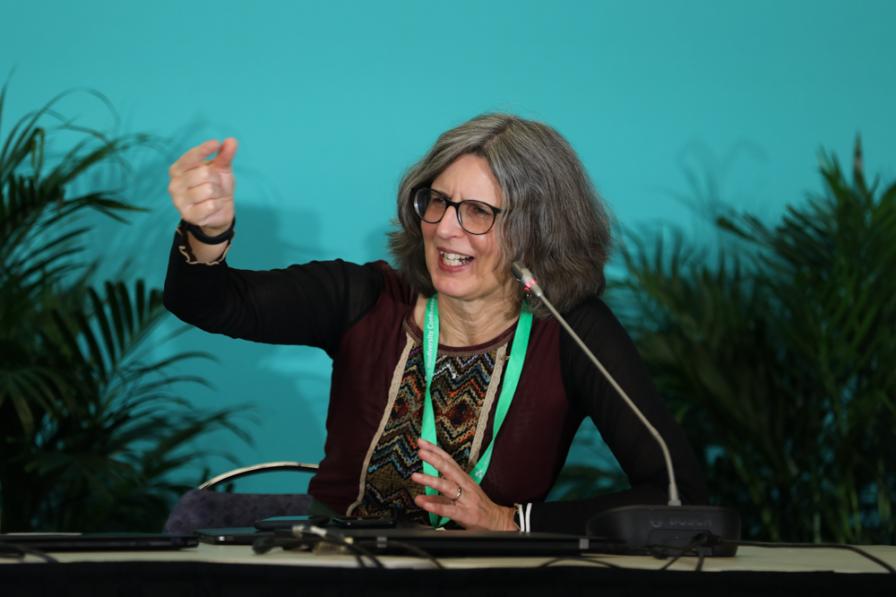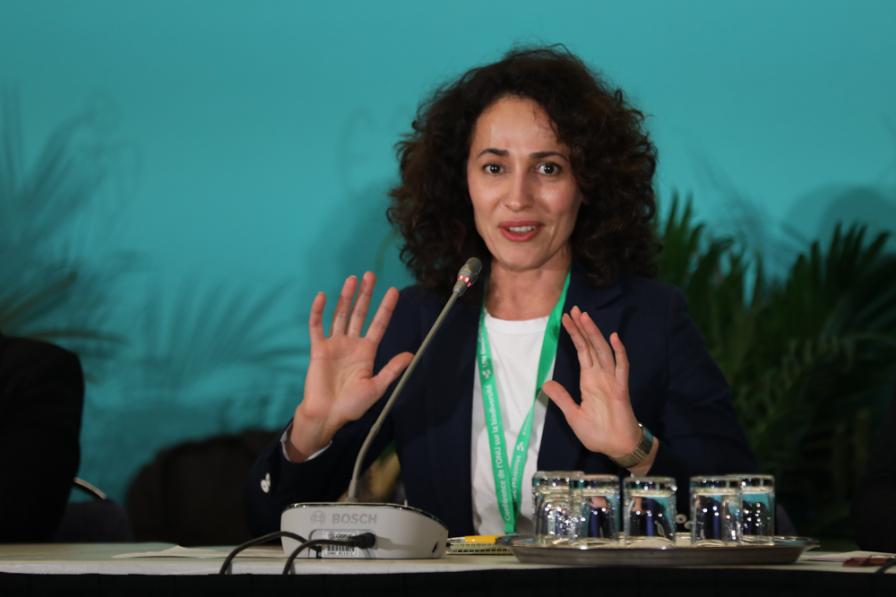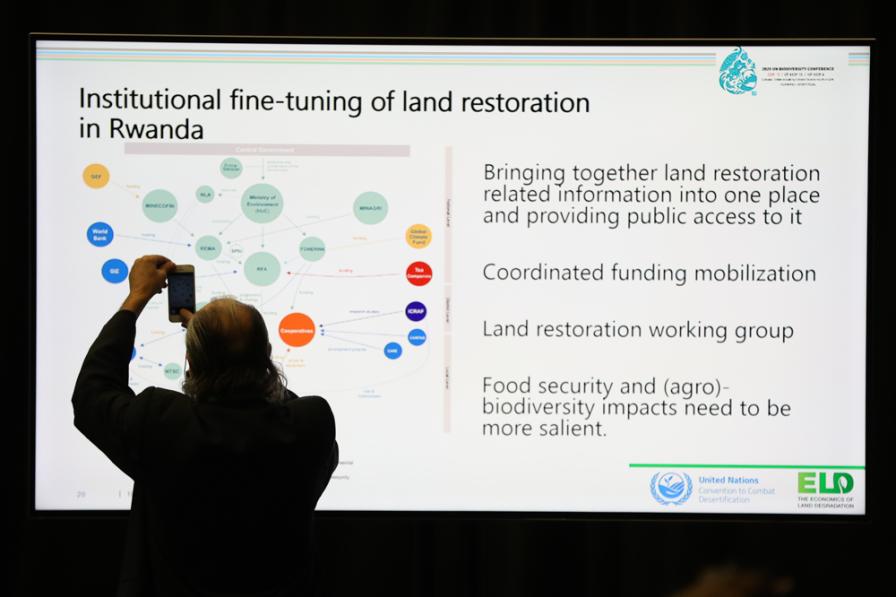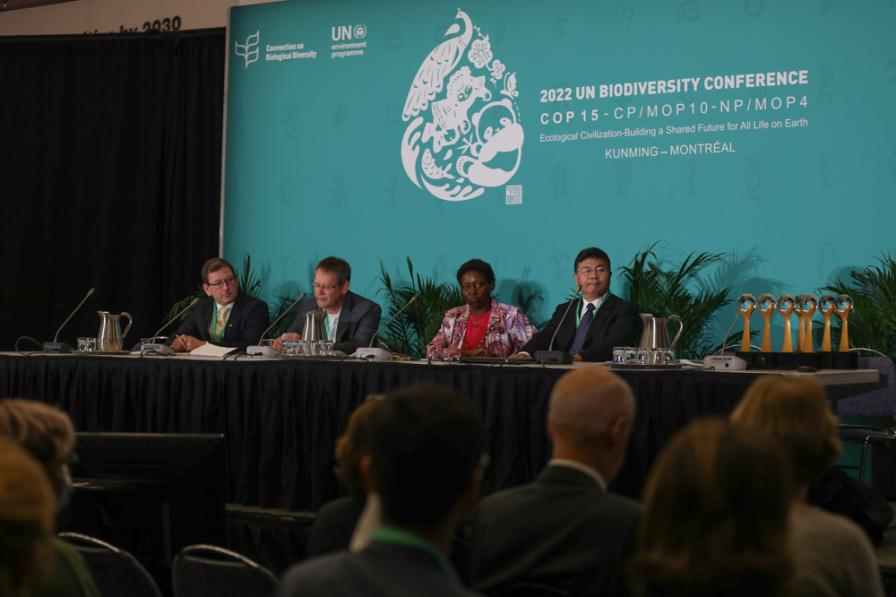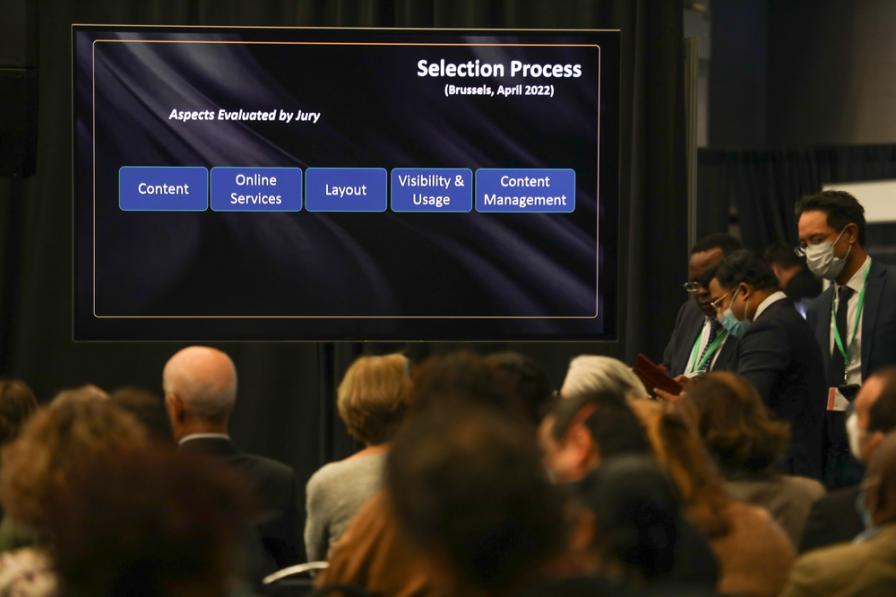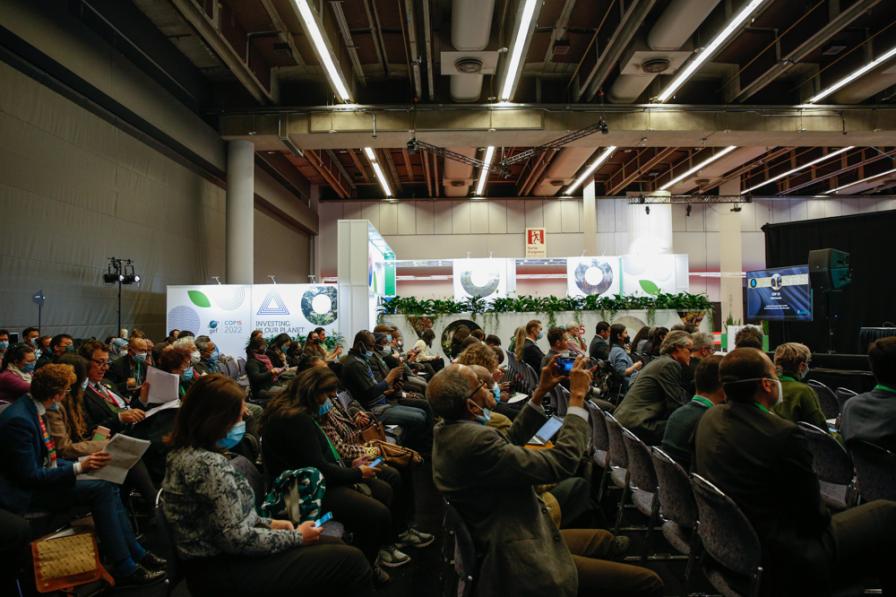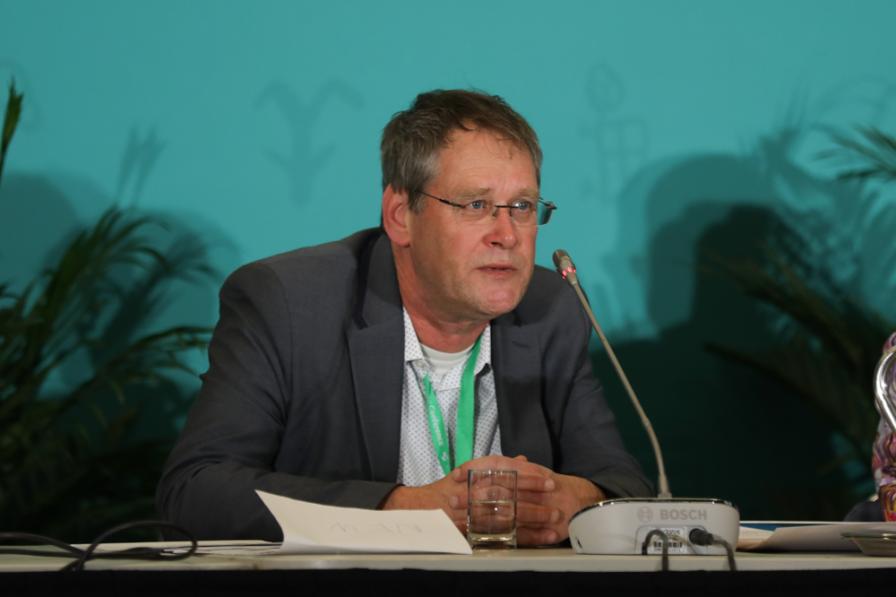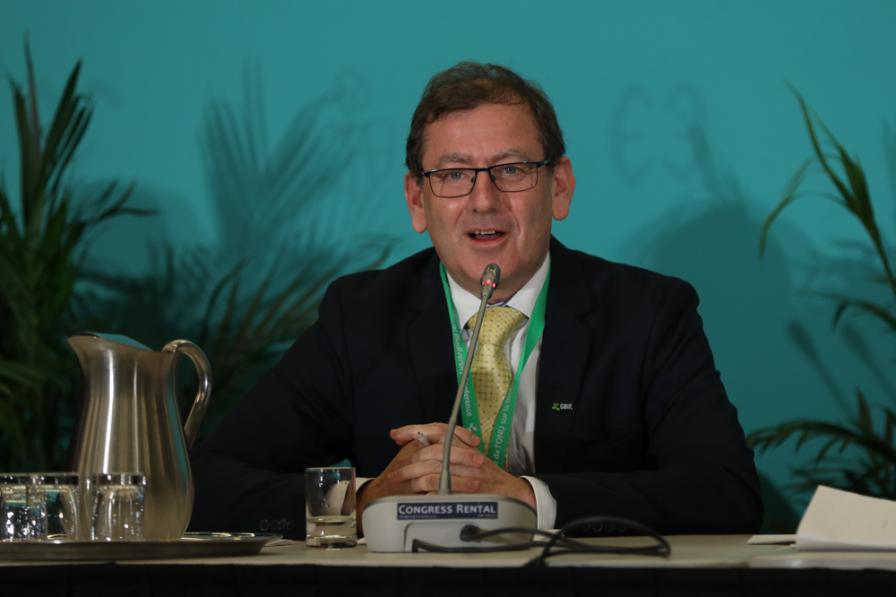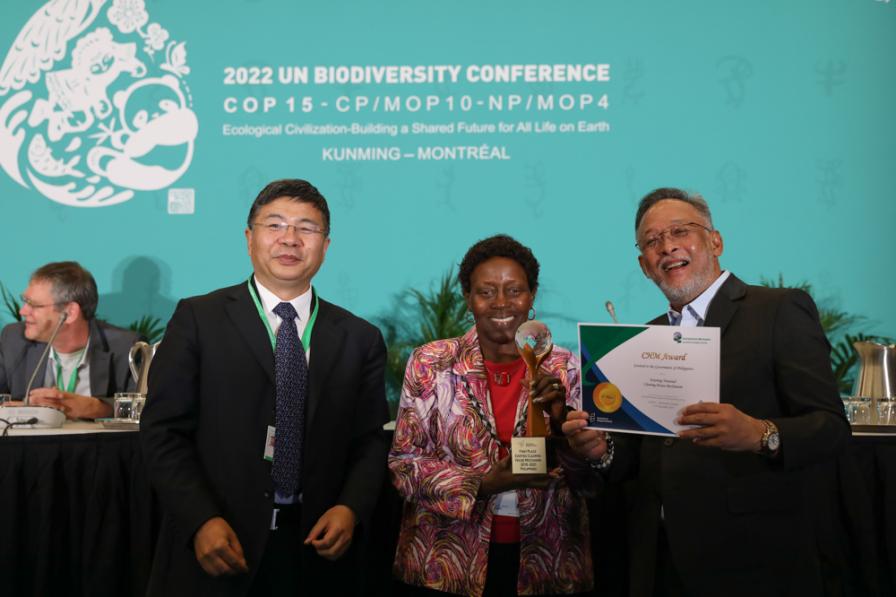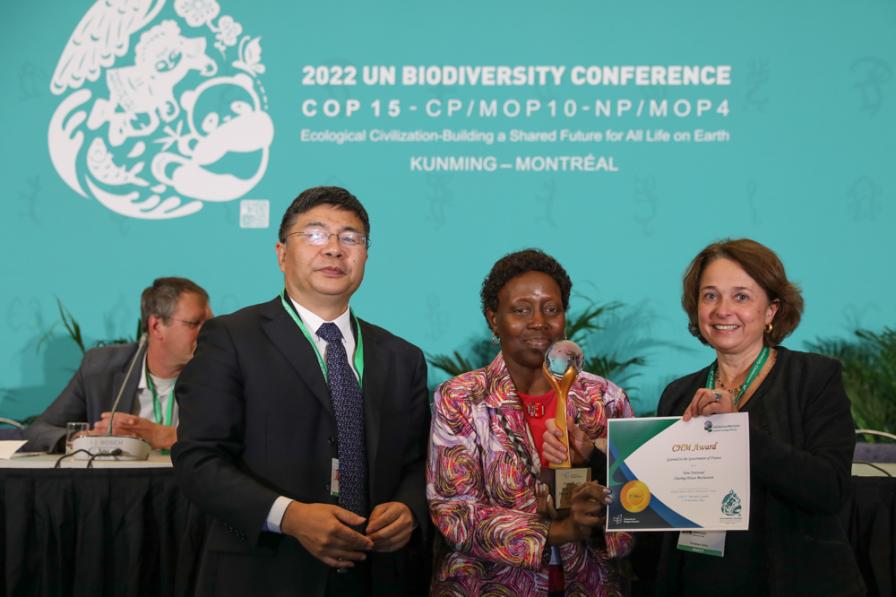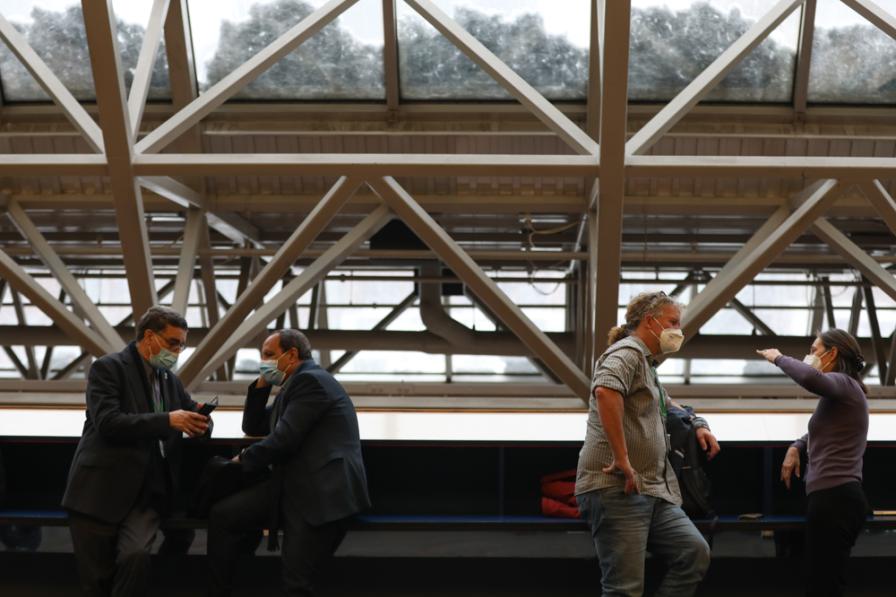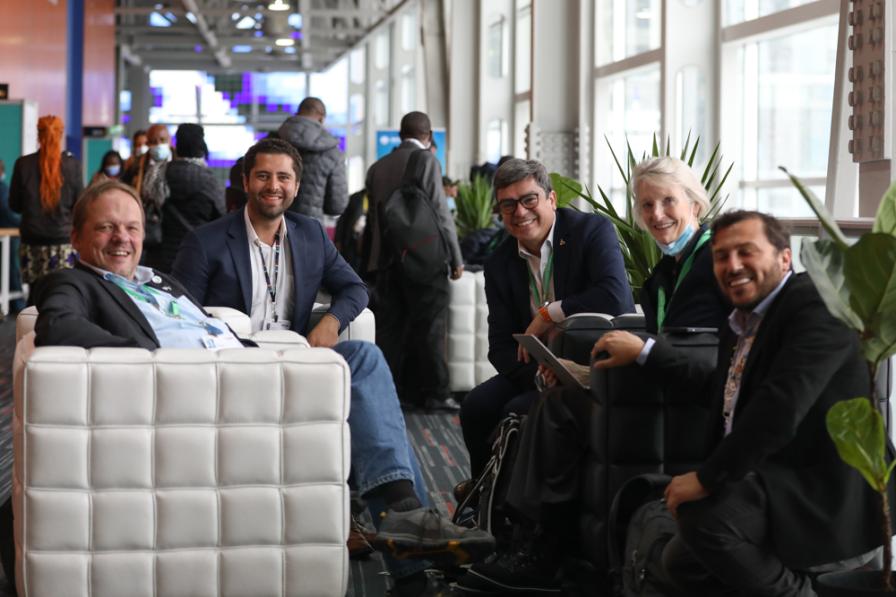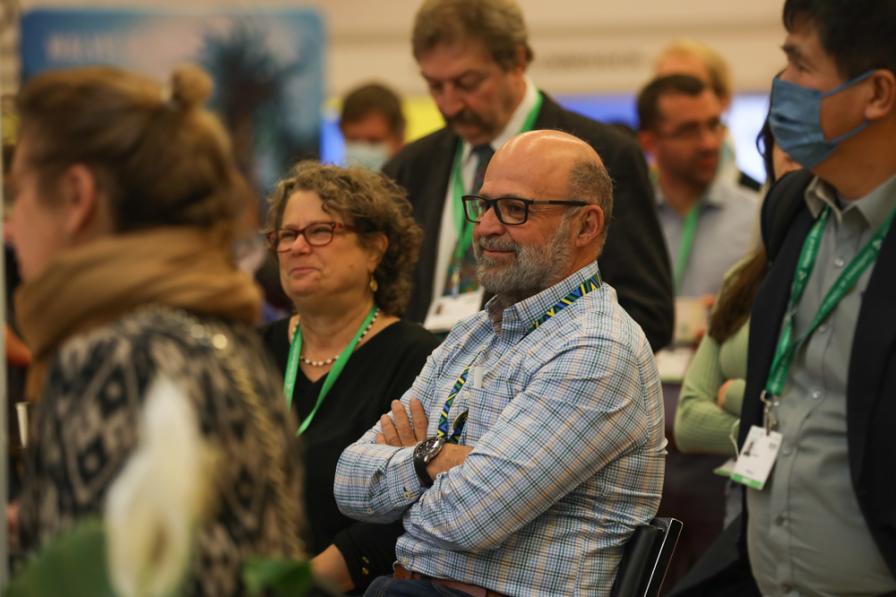Summary
The final day offered a forward-looking vision of the Rio Conventions and how discussions, decisions and events at COP 15 can help streamline even stronger coherence and cooperation between them.
The final day of the Rio Conventions Pavilion offered a forward-looking vision of the Rio Conventions and how discussions, decisions, and events at COP 15 can help streamline even stronger coherence and cooperation among them.
Speakers and participants expressed enthusiasm for the post-2020 global biodiversity framework (GBF) to be adopted at COP 15 and how it can catalyze action to address the biodiversity and climate crises.
Maximizing Synergies Among Rio Conventions to Accelerate the Biodiversity, Climate, and Land Agendas
The session outlined how harmonized and coherent implementation of commitments under the UN Framework Convention on Climate Change (UNFCCC), the UN Convention to Combat Desertification (UNCCD), and the Convention on Biological Diversity (CBD) could improve effectiveness and realize significant efficiency gains in achieving land degradation neutrality (LDN), meeting biodiversity and climate targets, and transforming food systems.
Moderator Nina Bisom, German Agency for International Cooperation (GIZ), highlighted that while the UNFCCC’s nationally determined contributions (NDCs), the CBD’s national biodiversity strategies and action plans (NBSAPs), the UNCCD’s national action plans (NAPs), the 2030 Agenda for Sustainable Developments’ LDN, and other international initiatives such as the Bonn Challenge all pursue targets on sustainable land management and land restoration, implementation currently takes place in a siloed manner and interlinkages are insufficient. She suggested harmonizing indicators and monitoring systems to show how efforts to implement one target help advance others.
Alisher Mirzabaev, University of Bonn, presented preliminary results of a study on the economics of harmonized land restoration targets in Rwanda, highlighting the positive cost-benefit ratio of restoration activities. He noted that establishment and maintenance costs for land restoration are well known, but knowledge gaps remain with respect to transaction and organizational costs. He added that monitoring, evaluation, and enforcement represent major cost factors. He further postulated that the main channel for synergies would be through reducing these costs, and taking advantage of modern remote sensing technologies. He suggested three main steps: joint mapping of lands for restoration across Conventions and initiatives; integration of biodiversity targets within existing land restoration commitments; and joint monitoring and evaluation systems tracking the achievements of all targets.
The ensuing discussion highlighted the lack of coordination among actors shown in the Rwanda institutional map, and identified incentives for farmers as the most impactful action, given “all arrows in the map lead to the farmers.” Positive externalities that could be derived from improved public policies, reduced information asymmetrie, and better coordination were also discussed.
During a panel discussion, representatives from the Rio Conventions were invited to provide their viewpoints where existing gaps remain, and where burgeoning opportunities exist for enhanced coordination between the work of the Secretariats.
Annie Kairaba, Executive Director and Founder, Rwanda Initiative for Sustainable Development, provided her country’s experience in a first of its kind assessment study on costs and benefits of siloed versus integrated programming of Rio Convention national targets and commitments. This study focused on sustainable land management and terrestrial ecosystem restoration. She applauded the study’s efforts in centralizing key information and making it accessible to the public. She added that the results of the assessment also revealed the need for food security and agro-biodiversity impacts to be more salient and for farmers to play a bigger role in ensuring the achievement of land restoration.
Heike Henn, German Federal Ministry for Economic Cooperation and Development (BMZ), emphasized the need for more efficient and effective integrated support to countries like Rwanda dealing with land restoration. She also suggested that her government can work with different ministries in other countries that address the mandates of the Rio Conventions to ensure an aligned, integrated approach and better coordination.
Jamal Annagylyjova, CBD, noted how this assessment is on the right path, bridging gaps between the Rio Conventions and serving as a type of guidance document for the focal points of all three Conventions. She stated that a methodology on how the Conventions can converge and complement each other’s their work does not yet exist. However, she said the three COPs that took place this year produced promising decisions, which focal points can cross-check and give a solid mandate to make stronger linkages between the Secretariats and countries.
Sasha Alexander, UNCCD, emphasised the need to incentivize communication and institutional collaboration both at the national and global levels. He suggested this could be done through sharing experiences, giving guidance on future work streams, and trickling down information to the country-level. He also pointed out that challenges remain with respect to governance issues, institutional issues, and power dynamics that come into play when facilitating mapping in projects such as the Rwanda initiative. He encouraged looking at gender responsiveness, tenure security, and the engagement of youth and other stakeholders that are disenfranchised when designing initiatives.
Dirk Nemitz, UNFCCC, echoed the viewpoints of the other Rio Convention panelists in his recorded video message stating that synergies are extremely important for sustainable land management and ecosystems and knowing where the strongest areas are is crucial to enable better implementation regarding restoration activities.
Wrapping up, Nina Bisom, GIZ, summarized key messages from this panel discussion, noting the importance of incentivizing different actors and finance by developing concrete examples of policy coherence in project proposals as well as clear monitoring of projects funded by the Global Environment Facility to assess benefits accrued for the three Rio Conventions. She suggested that joint data, information sharing, and coordination across institutional structures can help overcome working in silos.
Clearing-House Mechanism Award Ceremony
In the final session of the Pavilion, certificates of appreciation and awards were distributed to recognize Parties who have made significant progress in establishing their Clearing-House Mechanism (CHM) websites and platforms. The jury based its evaluation on the following aspects: content, online services, layout, visibility and usage, and content management.
The award ceremony was presided over by: Elizabeth Marema Mruma, CBD Executive Secretary; Han de Koeijer, Chair, Informal Committee to the CHM, Belgium; Rigobert Ntep, Member, Informal Committee to the CHM, Cameroon; John Tayleur, Member, Informal Committee to the CHM, UNEP-WCMC; and Tim Hirsch, Observer, Informal Advisory Committee to the CHM, Global Biodiversity Information Facility.
Certificates of appreciation in existing national CHM website/platform for Parties were presented to: Spain, New Zealand, Costa Rica, and the ASEAN Centre for Biodiversity. In the same category, Malaysia came in third place, Mexico in second place, and the Philippines as the first place winner.
Certificates of appreciation in the new national CHM category were presented to Morocco and the Netherlands.
Prizes in the new national CHM category were handed to Burundi, Bhutan, and Belgium all tying in second place. The winner in this category was France.
CBD Executive Secretary Elizabeth Marema Mruma concluded the ceremony by noting that the CHM is an effective mechanism to provide information, technical cooperation, sharing knowledge, and focused collaboration, which will become increasingly important for the GBF. She added that the CHM creates a sustainable mechanism for sharing biodiversity information and bridging the gap between data and knowledge.
Liu Ning, representative of the Chinese COP 15 Presidency, also provided congratulatory words to the nominees and winners and underlined the important role of the CHM for Parties to share information with respect to implementation of the GBF.
Following the conclusion of this event, a representative from the EU provided a few words on behalf of the Friends of the Global Knowledge Support Service for Biodiversity, introducing the programme and noting how it builds on existing tools to help Parties implement the GBF.
The Earth Negotiations Bulletin is covering the Rio Conventions Pavilion at COP 15 events from 13-18 December.
For more information: Rio Conventions Pavilion
All ENB photos are free to use with attribution. For the CBD COP 15 Rio Conventions Pavilion, please use: Photo by IISD/ENB | Kiara Worth.
To receive free coverage of global environmental events delivered to your inbox, subscribe to the ENB Update newsletter.


